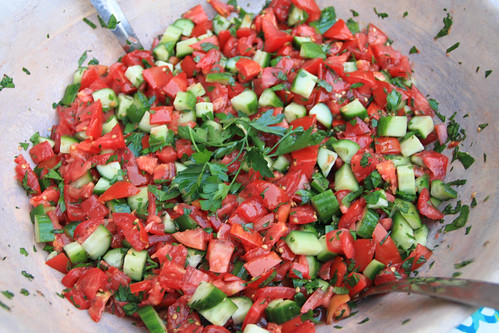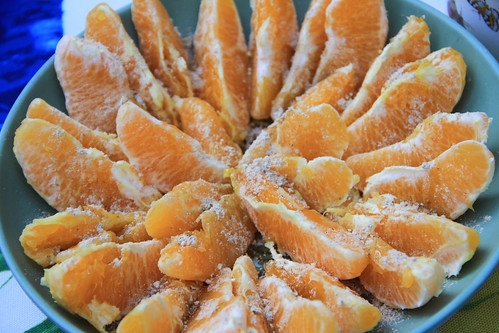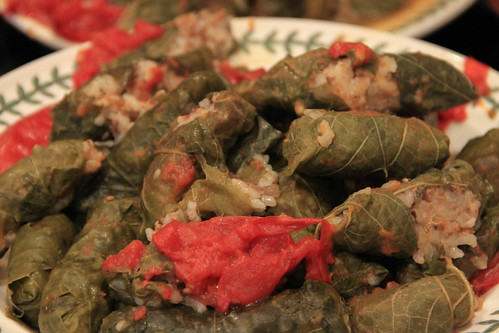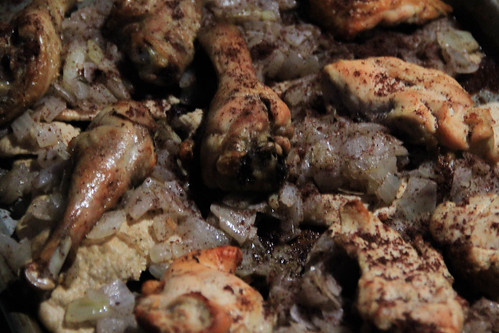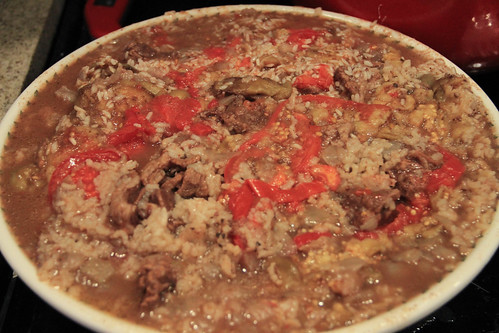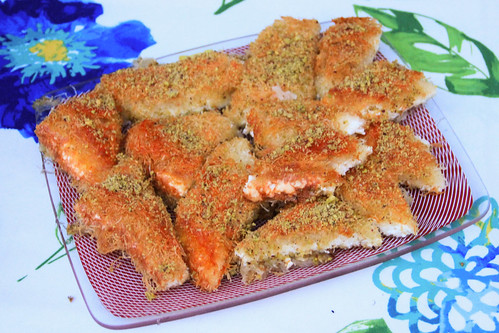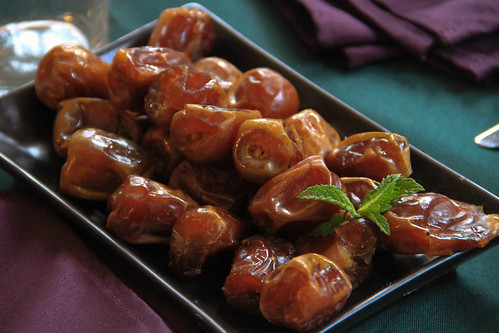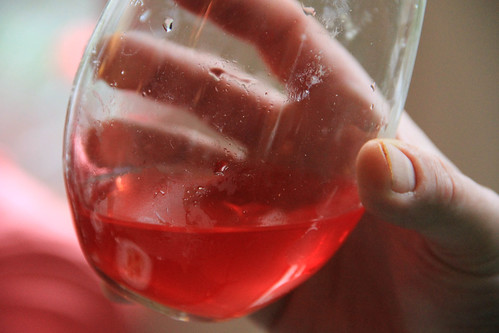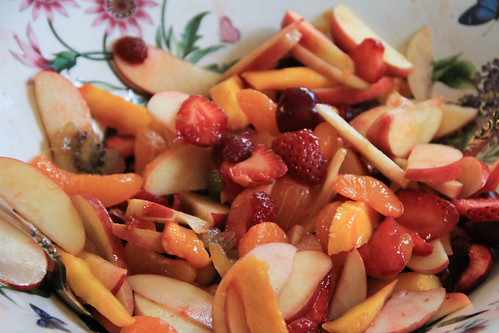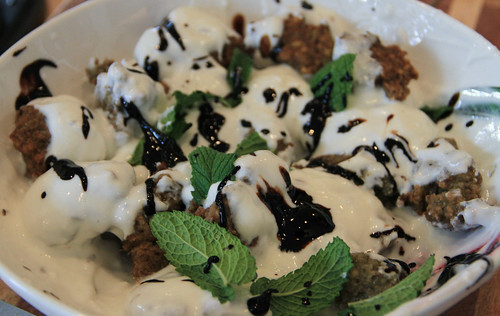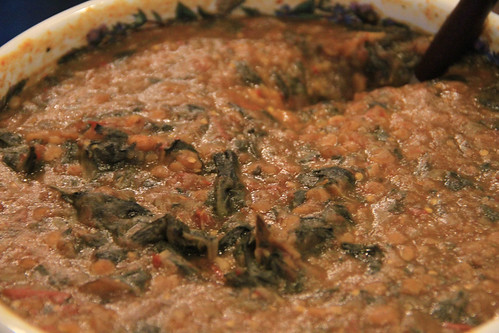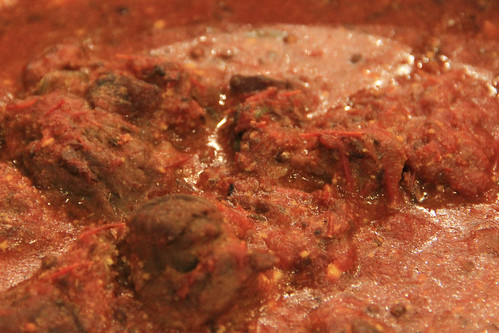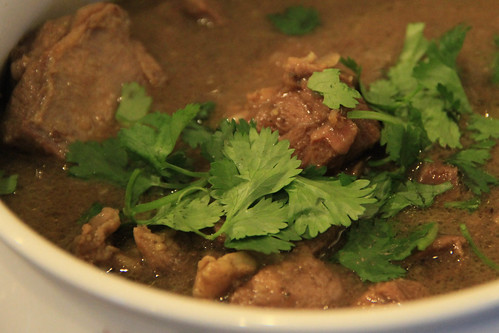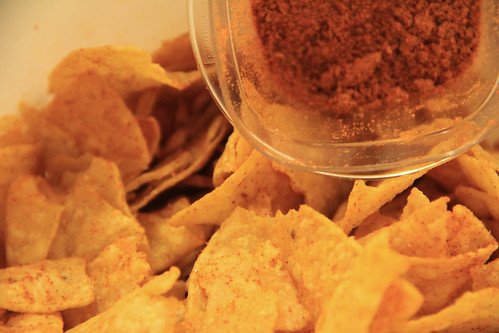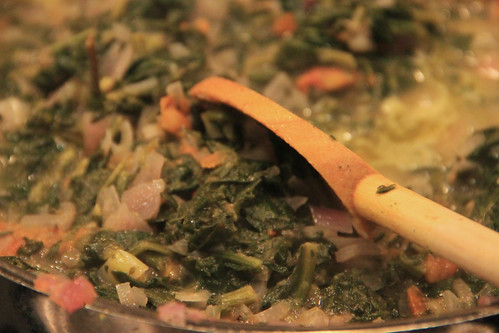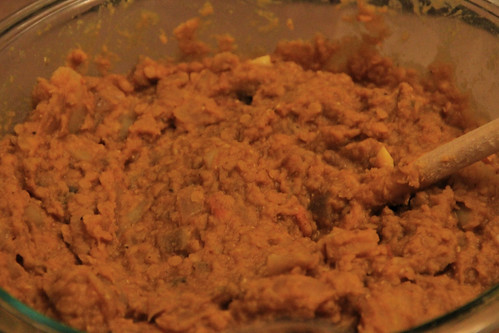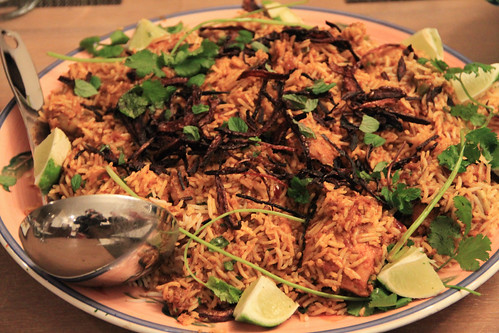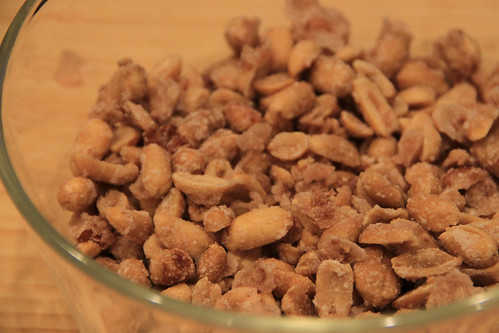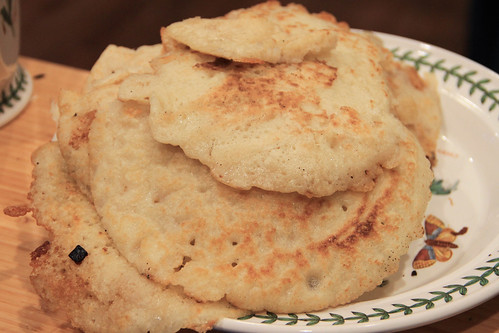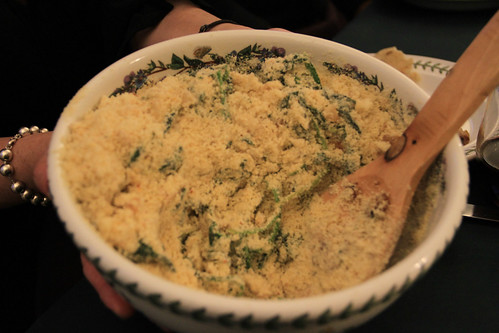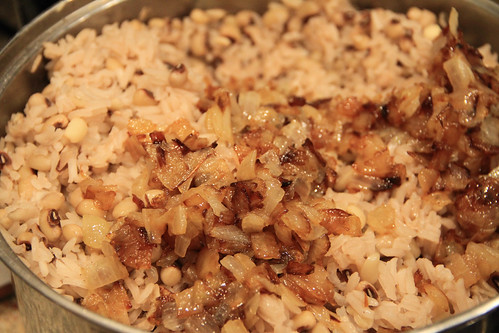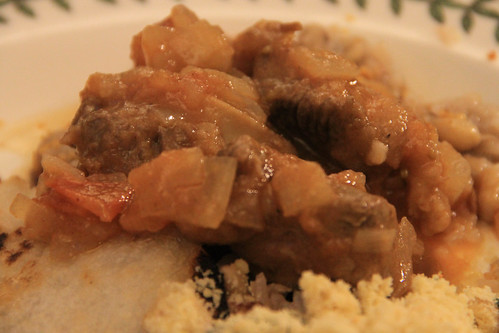For the second year, we invited everyone on the block for a late-summer Nosh. Laura got a permit to close down the street, neighbors brought over tables and chairs, and everyone sat down…just in time for the very first rain of the season to arrive!
Since most of what people know about Panama is its role in transportation due to its canal, it felt appropriate to be eating this meal in a long line in the street! It was also a treat to have the Smiths over from the other side of town; we were happy to have them crash our otherwise neighbors-only event because they lived in Panama and shared stories of living in the American community there.

A big thanks to the two dozen or so neighbors who showed up, both physically as well as for fundraising. It was one of our biggest meals yet in terms of money raised.
Patacones | Twice-fried green plantains | Recipe
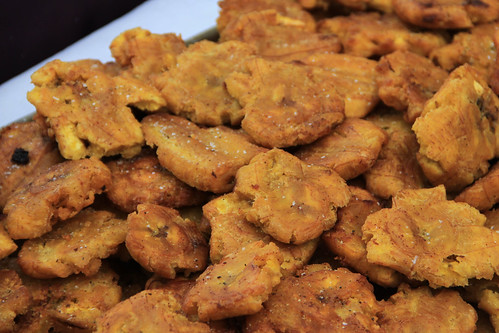
Green or ripe, thick or thin or even lengthwise or diced, there’s pretty much no bad way to fry a plantain. But there’s an even better way: to do it twice. Some Caribbean countries call them patacones, others tostones, and all of them start by a quick one or two minute fry, then a smash, then a longer fry to get them crispy. Unlike the other countries, the classic Panamanian way to eat them is with ketchup on the side, a habit attributed to the Americans who built and for a long time ran the Panama Canal.
I figured they’d be popular, so I made nearly one plantain’s worth per person. Even though they’re of course best straight from the fryer, I made them all a bit before dinner and kept them warm in the oven, and nobody complained. They just asked for more.
Chicheme | Sweet corn drink | Recipe
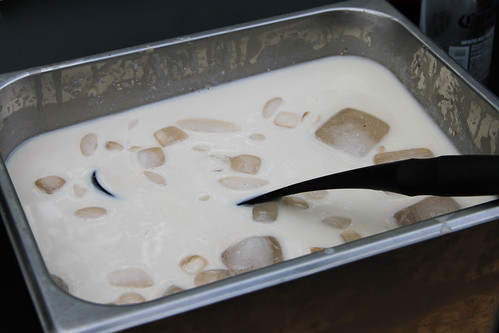
This was kinda like Caribbean bubble tea: a fairly refreshing, milky, cinnamon-y beverage, studded with toothsome kernels of dried then boiled corn. It was fine, but most guests understandably opted for beer or other more familiar refreshments.
Sancocho | Hen soup | Recipe
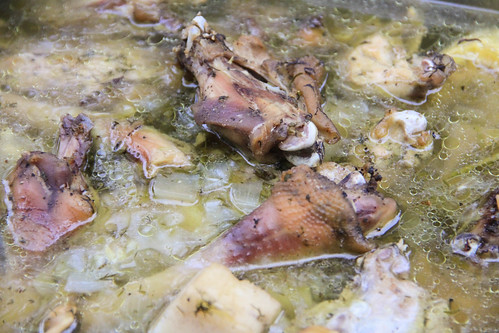
Most recipes for this mainstay of Panama call for gallina de patio, which pretty much means the post-menopausal hen that’s tottering around outside of the house. It turns out that at both Hispanic and Asian markets, you can find stewing hens in the freezer, for pretty cheap too. (Pretty sure they’re from an environment a tad less prosaic than a rural patio, but we make do with what we can.)
The predominant flavor of the soup is meant to be culantro, a close relative of cilantro with a sort of earthier flavor, but I couldn’t find it so I used plenty of cilantro instead. The soup was tasty, but I should have cooked it even longer, because old hens are really tough. Maybe this would be a good one for a pressure cooker.
Arroz con guandú | Rice with pigeon peas | Recipe
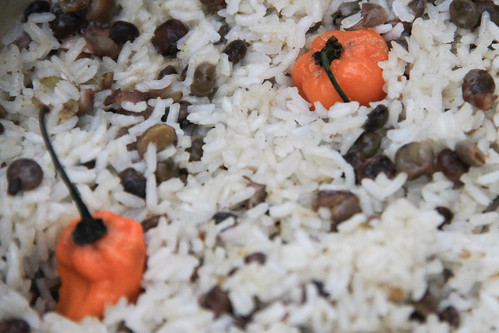
Even if you’ve never heard the name, you’ve possibly had pigeon peas in Indian food; one of the most common dishes in that cuisine is the stew-like, yellow toor dal made with the dried, hulled, split version of the legume. In the Caribbean, it’s typically eaten fresh, though up here you get it frozen when possible and otherwise canned, which we did here. All the same, it’s got a beany flavor for sure, but with a bit of almost smokiness to it. Which makes it perfect to mix with rich coconut rice, as a hearty way to fill your belly and get some nice flavor.
Flan | Custard | Recipe

Flan is a thing pretty much anywhere the Spanish colonized. Usually when a dish is that widespread, you see different varieties and regionalisms evolve, but as far as I can tell, everyone who cooks flan pretty much does it exactly the same way and hardly ever with any flavor variation: a lightly vanilla-scented egg custard with a sauce of caramelized sugar. (The only variations I’ve seen involve differing amounts of fresh and/or canned milk products.)
I put the request out for a neighbor to help make flan, and there was some confusion and suddenly we ended up with way too much flan. (There was one or two out of the picture!) They were all made with different recipes, and all tasted pretty much the same. The only variation was Holly’s flan cake, which added some much appreciated variety.

